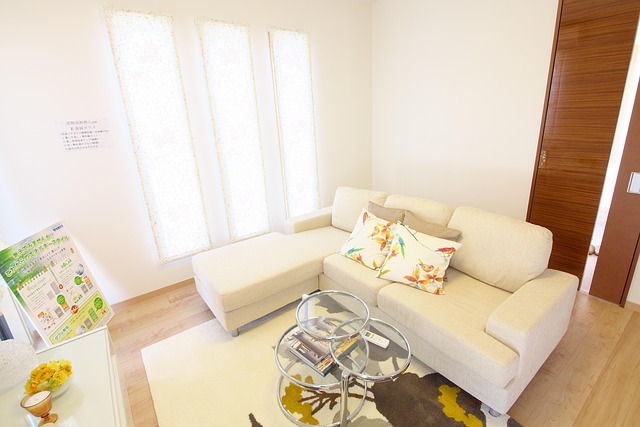The student eco guide promotes sustainable living on campus through affordable changes like energy conservation, plant-based dining, eco-commuting, green room setup, and efficient appliance choices, collectively reducing environmental impact and utility costs.
Dive into the world of sustainable college living with our comprehensive student eco guide. Discover practical tips and tricks to reduce your carbon footprint, make eco-conscious choices in dining, navigate campus sustainably, and set up an environmentally friendly dorm room. Learn how to save energy, cut costs, and contribute to a greener future. From eco-friendly moves on campus to responsible decorating, this guide has everything you need to become an eco champion while studying away.
- Reduce Your Carbon Footprint: Eco-Friendly Moves for Students
- Sustainable Dining: Choosing Plant-Based and Local Options
- Green Commute Choices: Getting Around Campus Sustainably
- Eco-Conscious Room Setup: Decorate Responsibly
- Save Energy, Save Money: Tips for Efficient Living
Reduce Your Carbon Footprint: Eco-Friendly Moves for Students

Going green doesn’t have to be complicated, even as a student with a limited budget. There are simple changes you can make in your daily routine to reduce your environmental impact and contribute to a more sustainable college experience. Start by considering your energy usage; turn off lights and electronics when not in use, opt for energy-efficient appliances if possible, and take advantage of natural lighting during the day.
Transportation is another key area where students can make an eco-friendly difference. Whenever feasible, walk or bike to classes instead of relying on gas-guzzling vehicles. If public transportation options are available, they’re a great way to reduce your carbon emissions. Even small changes, like carpooling with roommates or using ride-sharing apps for longer trips, can collectively make a significant impact. Remember, every action counts in the quest for a greener college life! (Tip: Look out for campus initiatives promoting sustainable transportation options – get involved and lend your support!)
Sustainable Dining: Choosing Plant-Based and Local Options

Sustainable dining is an integral part of a student’s eco-friendly lifestyle, and it starts with mindful food choices. As a college student, you have the power to reduce your carbon footprint by opting for plant-based meals. This shift can significantly impact the environment, as the meat industry contributes to deforestation, water usage, and greenhouse gas emissions. By embracing a vegetarian or vegan diet, or even simply reducing meat consumption, you’re making a positive change.
When selecting food options, prioritize local produce. Many colleges now offer dining plans with partnerships from nearby farms, ensuring fresher and more sustainable ingredients. Local foods have lower transportation costs and reduce the carbon footprint associated with long-distance shipping. So, check out the college cafeteria’s menu for seasonal specialties and participate in farm-to-table initiatives. This student eco guide is a first step towards a greener lifestyle that benefits both you and the planet.
Green Commute Choices: Getting Around Campus Sustainably

Students looking for a sustainable college experience should start by considering their commute options. Opting for greener transportation methods is an excellent way to lower your environmental impact from day one. If possible, walk or bike to class—it’s good for both your health and the planet. Many campuses offer dedicated bike lanes and storage facilities, making cycling a convenient choice.
For longer distances, public transport is a eco-friendly alternative to driving alone. Using buses, trains, or subways reduces carbon emissions and can save students money on fuel and parking fees. Some colleges even have partnerships with local transit systems, offering discounted passes to make sustainable commuting more accessible.
Eco-Conscious Room Setup: Decorate Responsibly

Creating an eco-conscious room setup is a great way for students to embrace sustainable living on campus. When decorating, choose furniture made from recycled or sustainable materials. Opting for second-hand items through thrift stores or online platforms can also reduce waste and save money. Consider the full lifecycle of products; natural, non-toxic finishes and easily recyclable materials are ideal.
Avoid single-use items and opt for reusable alternatives instead. For example, use beeswax wraps or cloth napkins instead of plastic wrap and paper towels. Incorporate energy-efficient lighting and appliances to reduce your carbon footprint. Every thoughtful choice contributes to a greener living space and makes you an empowered part of the student eco guide to changing campus culture.
Save Energy, Save Money: Tips for Efficient Living

Going green doesn’t have to break the bank for students! One of the best ways to save both energy and money in college is by adopting simple, sustainable habits. Start by turning off lights and electronics when not in use; every watt saved translates to lower utility bills. Consider using power strips to easily switch off multiple devices at once.
Insulate your dorm room or apartment to keep temperatures regulated, reducing the need for excessive heating or cooling. Hang curtains or use door sweeps to prevent drafts. Opting for energy-efficient appliances and LED light bulbs is also a smart investment in both your environmental footprint and future savings. Remember, small changes can lead to significant impacts—and a fatter wallet!






